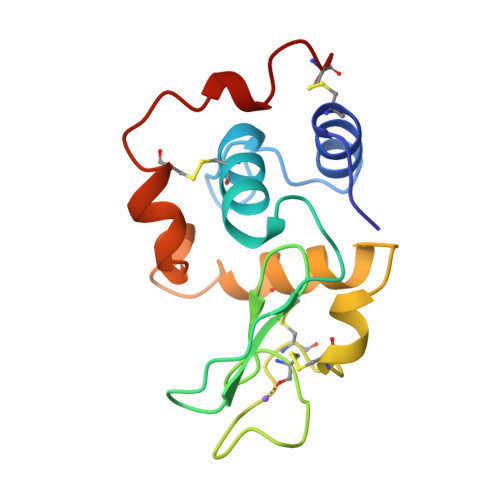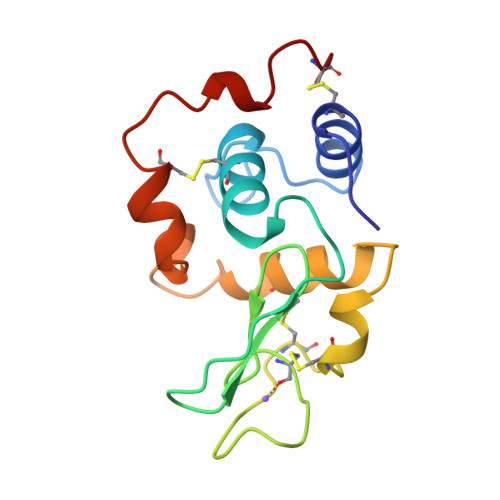Contribution of hydrophobic residues to the stability of human lysozyme: calorimetric studies and X-ray structural analysis of the five isoleucine to valine mutants.
Takano, K., Ogasahara, K., Kaneda, H., Yamagata, Y., Fujii, S., Kanaya, E., Kikuchi, M., Oobatake, M., Yutani, K.(1995) J Mol Biology 254: 62-76
- PubMed: 7473760
- DOI: https://doi.org/10.1006/jmbi.1995.0599
- Primary Citation of Related Structures:
1YAM, 1YAN, 1YAO, 1YAP, 1YAQ - PubMed Abstract:
In order to understand the contribution of hydrophobic residues to the conformational stability of human lysozyme, five Ile mutants (Ile --> Val) in the interior of the protein were constructed. The thermodynamic parameters characterizing the denaturation of these mutant proteins were determined by scanning calorimetry, and the three-dimensional structure of each mutant protein was solved at high resolution by X-ray crystallography. The thermodynamic analyses at 64.9 degrees C and at pH 2.7 revealed the following. (1) The stabilities of all the mutant proteins were decreased as compared with that of the wild-type protein. (2) The changes in the calorimetric enthalpies were larger than those in the Gibbs energies, and were compensated by entropy changes. (3) The destabilization mechanism of the mutant proteins differs, depending on the location of the mutation sites. X-ray analyses showed that the overall structures of all the mutant human lysozymes examined were identical to that of the wild-type protein, and only small structural rearrangements were observed locally around some of the mutation sites. The most striking change among the mutant proteins was found in the mutant protein, 159V, which contains a new water molecule in the cavity created by the mutation. The thermodynamic stabilities of the mutant proteins are discussed in light of the high-resolution X-ray structures of the wild-type and five mutant human lysozymes examined.
Organizational Affiliation:
Institute for Protein Research, Osaka University, Japan.

















